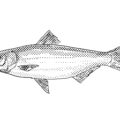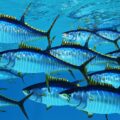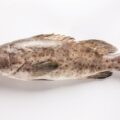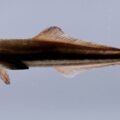Grouper and skipjacks differ in appearance, size, habitat, reproduction habits, and taste. However, there are similarities in their diets. Two fish types often confused with each other are grouper and skipjack.
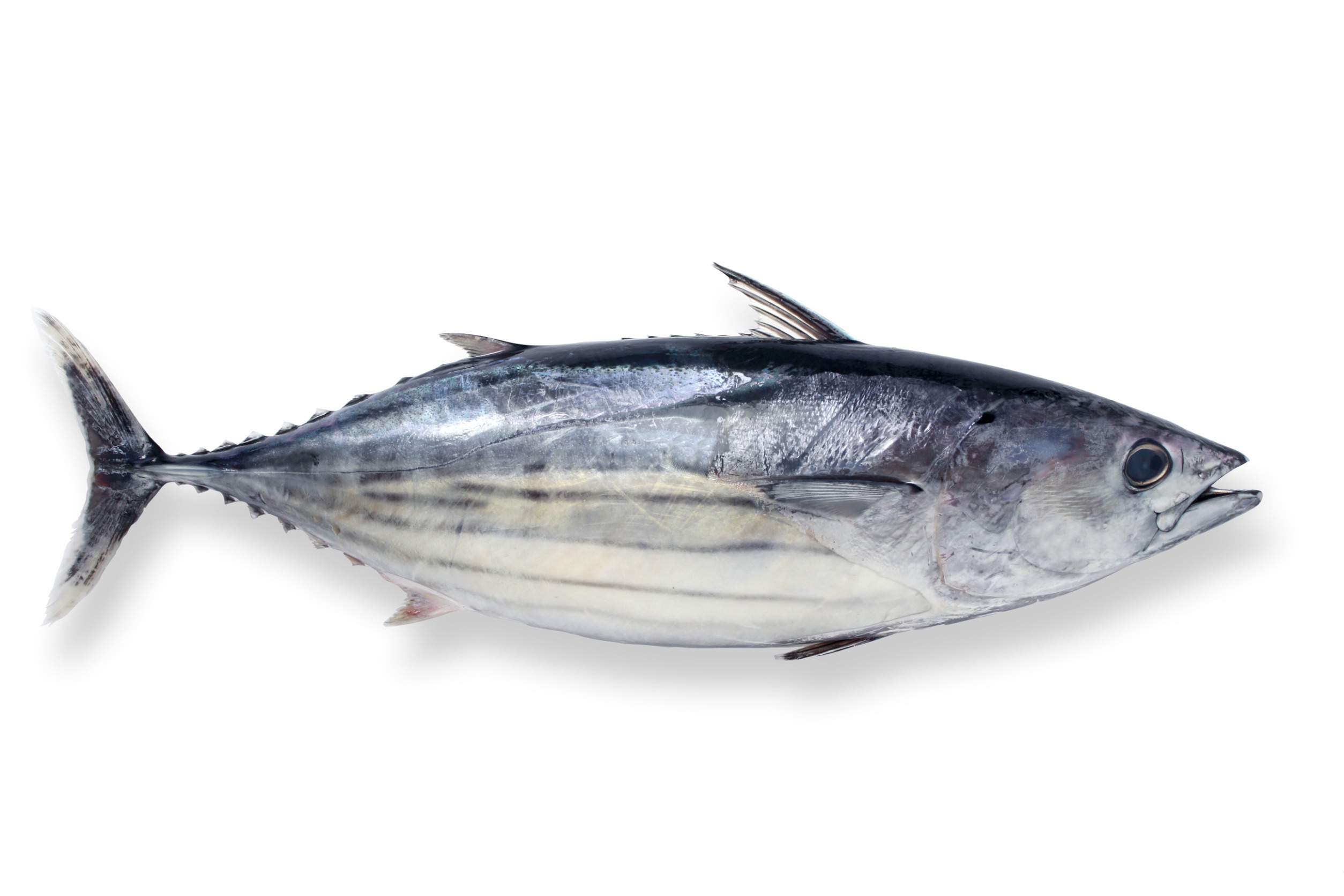
Classification differences between Grouper and Skipjack
Groupers are a family of fish that belong to the suborder Percoidei and the family Serranidae. Groupers are a diverse family of fish with over 160 recognized species. Groupers are classified in the order of Perciformes, which includes more than 10,000 species of fish.
The Perciformes are classified in the suborder Percoidei, which also includes other groups of fish such as snappers, sea basses, and wrasses.
Skipjack herring, scientifically known as Alosa Chrysochloris, is a small freshwater fish in North America. It belongs to the Clupeidae family, which includes other herring-like fishes such as shads and sardines. Skipjack Shad is commonly seen leaping out of the water while feeding. They are also known as blue herring, golden shad, river shad, Tennessee tarpon, and McKinley shad.
How to distinguish between Grouper and Skipjack?
Groupers have broad, flat heads and large mouths that can swallow prey whole. They have a long, continuous dorsal fin and a shorter, also continuous, anal fin. The caudal fin can be rounded or slightly concave. They can range in color from brown, gray, and green to bright reds and yellows, and some have distinct markings or patterns.
One of the distinguishing features of groupers is their ability to change their coloration rapidly to blend in with their surroundings. They vary in size, with some species growing quite large and others much smaller. Some species have unique physical features, such as the protruding lower jaw of the Nassau grouper or the elongated dorsal spines of the blacktip grouper.
Skipjack herrings are distinguished by a small, sharp spine in front of their dorsal fin. This spine can defend against predators or aid in catching prey. Additionally, skipjack herring have a deeply forked tail fin that sets them apart from other herring species, which generally have a more rounded tail shape.
This fish species has a slender, streamlined body shape typical of the herring family. They have a deep and laterally compressed body, flattened from side to side, with a pointed snout and a forked tail. The body is covered in smooth, silvery scales that reflect light and help to camouflage the fish in the water.
The coloration of skipjack herring can differ among different fishes, but they generally have a silver-colored body with a bluish-green or greenish-yellow tint on their backs. They also have a dark spot just behind their gill cover, another distinguishing characteristic of the species. The scales on their backs may be slightly larger than those on their sides, giving them a comparatively darker appearance when viewed from above.
They have several fins, including a dorsal fin on their back, an anal fin on their belly, and a pelvic fin on their underside. They also have a caudal or tail fin, which is deeply forked and helps to propel the fish through the water. They have eight to ten fin rays in their dorsal fin, 19–21 fin rays in their anal fin, and 9–10 fin rays in their pelvic fins.
Habitat difference between Grouper and Skipjack
Groupers live primarily in shallow tropical waters. They like to stay near coral reefs and man-made reefs, and they hang out most often near shipwrecks and ledges made of concrete. They also live in places with hard bottoms, such as rocks.
Skipjack herring are anadromous, meaning they spend most of their lives in freshwater rivers and lakes but migrate to the ocean to spawn. They prefer clear, fast-moving freshwater with a moderate current and a rocky or gravelly substrate, which limits their distribution to specific river systems and portions of those systems.
The migratory behavior of skipjack herring is an essential factor in their distribution, as they are found in different parts of their range at other times of the year. In the winter, skipjack herrings are in the ocean, where they overwinter before migrating to freshwater to spawn in the spring.
Distribution difference between Grouper and Skipjack
Groupers have a wide range and distribution and differ based on species. For example, the Atlantic Ocean is home to several species of groupers, including the goliath grouper, red grouper, black grouper, and yellow edge grouper.
The goliath grouper is available along the southeastern coast of the US and in the Gulf of Mexico. At the same time, other species are found in both the western and eastern Atlantic, ranging from Florida to South America and West Africa to Europe.
In the Pacific Ocean, groupers are found in the waters around Southeast Asia, Australia, and the western coast of the Americas. Groupers also occur in the Indian Ocean, with several species found in the waters around the Arabian Peninsula, the Indian subcontinent, and Southeast Asia. In addition, they are found in the Mediterranean Sea.
Skipjack herring are native to North America and found in freshwater systems along the Atlantic coast from Florida to Nova Scotia and the Gulf of Mexico. They are also found in several major river systems, including the Mississippi, Ohio, Hudson, and Susquehanna Rivers.
Their distribution within their range is most abundant in the southern portion, including Florida, Georgia, and the Gulf of Mexico. They are less common in the northern part of their range, including New England and the Great Lakes region.
Size and weight difference between Grouper and Skipjack
Groupers can live for many years and reach large weights as they mature, with slow growth rates. Juvenile groupers range from a few centimeters to several tens of centimeters, while adult groupers can be over two meters long.
For example, a red grouper can grow to around 50-60 centimeters and weigh up to 23 kilograms in 6 years. After about 15 years, they can reach lengths of up to 100 centimeters and weigh over 45 kilograms. Giant groupers can grow to over two meters and weigh over 300 kilograms, living for up to 50 years or more and not reaching sexual maturity until they are 10-12 years old.
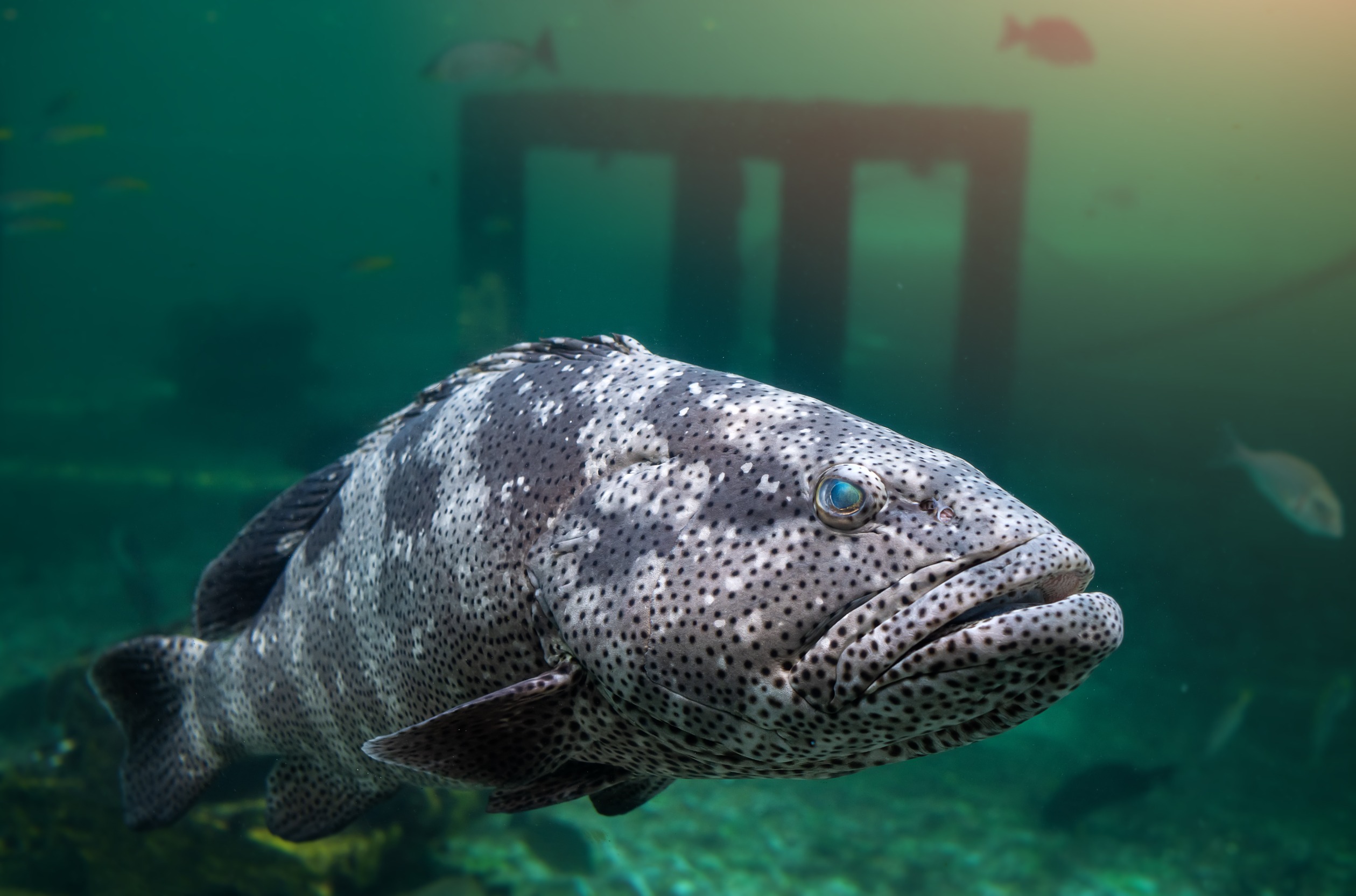
Skipjack herrings are comparatively much smaller, small enough to be a grouper’s prey. Skipjack herring can reach adulthood at around 3 to 4 years of age. Adult skipjack herrings are 7 to 12 inches (18 to 30 cm) long and weigh between 1 and 5 ounces (30 to 140 g). Juveniles are typically around 2 to 4 inches (5 to 10 cm) in length and weigh only a few grams.
Skipjack herring can grow up to 16 inches (40 cm) in length and weigh up to 1 pound (0.45 kg) at their maximum size. Larger skipjack herrings must be unique, and most are much smaller.
Diet difference between Grouper and Skipjack
Groupers are bottom feeders and opportunistic predators that feed on various prey, with their diets varying depending on the species and habitat. Juveniles typically feed on small crustaceans and fish, while adults prey on larger fish and invertebrates. Groupers use their giant mouths to engulf prey and swallow them whole, using their sharp teeth to prevent escape.
Everyday prey includes fish, crustaceans, cephalopods, and invertebrates like sea urchins and starfish. Groupers may also scavenge on dead animals or feed on smaller organisms around artificial structures like reefs and shipwrecks.
On the other hand, skipjack herring are a pelagic species, meaning they prefer swimming and feeding in open water rather than near the bottom. They are a planktivorous fish species. They primarily feed on tiny aquatic organisms such as plankton, zooplankton, and small crustaceans, similar to groupers.
Their diet may include small fish and fish larvae, insects, and other invertebrates. Juvenile skipjack herring typically feed on small crustaceans such as copepods, cladocerans, and insect larvae. They shift their diet to include more zooplankton and small fish as they grow.
Reproduction habits difference between Grouper and Skipjack
Grouper exhibits a variety of spawning behaviors depending on the species and location. Generally, most grouper species are known for their unique spawning behaviors, which involve forming large aggregations, or “spawning events,” during certain times of the year.
During spawning, male and female groupers will come together to release their eggs and sperm into the water column. These events can occur in deep offshore waters or shallow reef habitats and may last several days to several weeks. In some species of grouper, such as the Nassau grouper, the timing of the spawning event is synchronized with the lunar cycle, occurring only during the full moon or new moon phases.
Once the eggs and sperm are released, they fertilize and develop into planktonic larvae, eventually settling to the bottom and growing into juvenile groupers. The larvae are carried by ocean currents, which can disperse them over large distances from the original spawning site.
The spawning of skipjacks is less remarkable. During the spring and early summer, adult skipjack herring migrate from the ocean to freshwater rivers and streams to spawn. They prefer clear, fast-moving water with a moderate current and a gravelly or rocky bottom, where they can lay their eggs. After spawning, the adults return to the ocean, leaving their eggs and young in the freshwater environment.
Once they find a suitable spawning location, males and females swim together in pairs or small groups, releasing their eggs and sperm into the water. Skipjack herring spawn in open water rather than building nests or using other structures like some other fish species.
After fertilizing the eggs, they drift downstream, hatching into larvae after several days. The larvae are initially weak swimmers and rely on the current to carry them downstream to their nursery habitats in the estuaries and nearshore areas. Once they reach these habitats, they undergo a period of rapid growth and development, feeding on tiny aquatic organisms such as plankton and insect larvae.
Juvenile skipjack herring remain in freshwater for the first several months of their lives.
Do Grouper and Skipjack taste the same?
There are significant differences between the taste of groupers and skipjacks. The taste of grouper is mild and sweet, with a firm, meaty texture, while skipjack herring has a strong, fishy flavor and a soft, oily texture.
Grouper is known for its firm, meaty texture, and mild, sweet flavor. Grouper tastes and feels different depending on the species, but it usually has a mild, slightly sweet flavor that is often compared to halibut or sea bass.
Grouper also has a relatively low oil content, contributing to its mild flavor and firm texture. It is a flexible fish that can be cooked in many different ways, including grilling, baking, and frying.
On the other hand, skipjack herring is an oily fish typically not consumed for its culinary value but rather for use as bait or as a food source for larger predatory fish. Skipjack herring has a strong, fishy flavor and a soft, oily texture. Some people describe skipjack herring’s taste as similar to sardines or anchovies but with a more robust flavor.
Due to its strong flavor and oily texture, skipjack herring is typically not consumed as a standalone dish but as an ingredient in other dishes, such as fish cakes or stews.
In conclusion, there are barely any similarities between groupers and skipjacks. They belong to entirely different species, and most of their characteristics differ.

